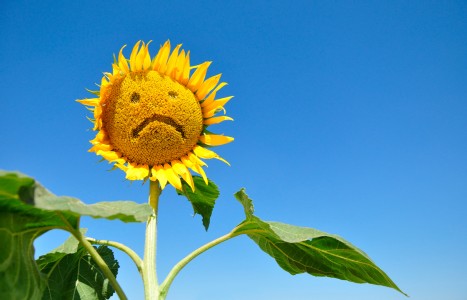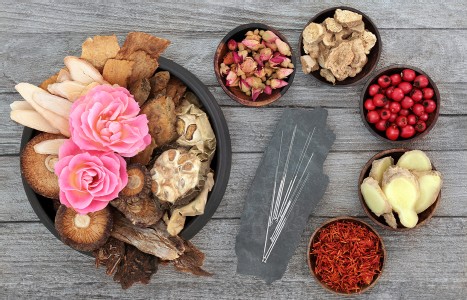Did any of you ever get the feeling in school that it simply was not OK to speak about wanting to be successful? To get into the nitty gritty details of how to make money in practice? Maybe you were even someone like me who was directly told by someone in a position of power that I needed to take what I could get because in private practice, I wouldn’t make money.
External Treatment of TCM for Diabetes, and the Relation between Diabetes and Pressure Pain Points in the Low Back
Diabetes is a multiple system chronic disease caused by a metabolic disorder of glucose in the body. It is called Hsiao Ke in traditional Chinese medicine and is characterized by polydipsia, polyphagia and polyuria. This disease can be divided into three types by its symptoms:
Upper jiao: marked by polydipsia due to excessive heat in the heart and lung
Middle jiao: marked by polyphagia due to excessive heat in the stomach
Lower jiao: marked by polyuria, accompanied by thirst and polydipsia due to consumption of the kidney yin.
After analyzing 116 clinical cases of type II non-insulin dependent diabetes mellitus (NIDDM), I have found that besides the characteristic symptoms, most patients have pressure pain points to varying degrees. These points are only found by touching during clinical examination, and are distributed mainly at the vertebral gaps on both sides of the spine and sacrospinal muscle. Following the theory of channels and collaterals of TCM, they are distributed on the du channel, jai ji acupoint and bladder channel of foot (taiyang). These pressure points roughly tally with the distribution of three areas: the upper, middle and lower jiao.
Table I: Distribution and position of pressure pain points along the back.
| Number of patients | 116 |
| Patients with pressure pain points | 104 (89.7%) |
| Pain points in the upper back | 27 (23.2%) |
| Pain points in the middle back | 86 (74.1%) |
| Pain points in the lower back | 45 (38.8%) |
From the above table, one can see that the rate of patients with pressure pain points is 89.7%. Most pain points were in the middle back; fewer in the lower back; and the fewest points were found in the lower back. Many patients had more than two pressure pain points. This data indicates that low back pressure pain point is a common physical sign and that it has an internal relation with NIDDM patients, but it is always neglected as the physical sign and is not obvious for patients to notice.
TCM believes the shu point to be the place where the energy of viscera enters or leaves, and the mu point to be the place where the energy of viscera converges. The shu point belongs to yang, while the mu point belongs to yin. Disease from the viscera will react from the shu point.
The pressure pain points in the back prove the relation between the shu and mu point. TCM theory states that treatment of yang problems occurs by dredging the yin channel, while treating yin problems takes place by dredging the yang channel. The pain points on the du channel, jia ji point and bladder channel of foot (taiyang) all belong to the yang channel. By this, the coordinating function of viscera can be reached, which is TCM's principle of treating internal diseases externally.
The external treatments for NIDDM include acupuncture; massotherapy; qi gong; external application of herbal medicine; cupping; and physical therapy. The type of diabetes should be identified before being treated. Manipulation must combine excretion with tonification methods. For the symptoms of partial swelling, obvious pressure pain and stiff tissue, excretion is used first, then tonification. The practice must be firm but gentle.
For those with light pain and weakness, tonification is used most. The following acupoints near pain points are recommended: du channel; bladder channel; jia ji; san yin jiao; chi hai; chin hsu; and yehmen. When performing massage, excretion is done mostly by rubbing; tonification is done by pushing. At the spinal gaps, practice finger pressure. By the side of the spine, use finger pressure; use palm pressure at the sacrospinal muscle. With overweight patients, use elbow pressure.
To summarize: manipulation should be performed from gentle to hard in a good order. Reverse the order back to gentle, then finish the treatment. Specific steps are as follows:
- Let the patient sit or lie down, exposing the back. The practitioner makes the palpation using three fingers or both thumbs along the spine, vertebral side and sacrospinal muscle, pressing in turn from up to down and from middle to side. Upon examination, the interspinal ligaments at the pain points are always found to be thickened and stiffened. The reduced elasticity or light protruding by the vertebral side-streak movable fascia can always be touched at the sacrospinal muscle, which presents partial swelling or scleroma.
- Let the patient lie on their stomach. The practitioner sets the acupuncture needles in the back's pressure pain points. If the pain points are at the spinous process, practice the ringlike position with five needles: place five needles at the process spinosus, on both sides of it, and on its upper and lower areas. If the pain points are interspinal, at the side of the spinous process, or at the sacrospinal muscle, practice the linelike position, with five needles on the du channel, jia ji and the bladder channel of foot (taiyang). With stagnant cold, plus cupping and physical therapy, the result will be better. Manipulate the needles twice and leave them in position for 20 minutes.
- The practitioner stands by the patient's side, performing the upward pushing with palms from the loins to the scapulae, 10 times for either side to relax the back muscles. Next, push the spine with rubbing movement using palm roots five times, then perform the palm-rub method on the pain point three minutes to have the back completely relaxed.
- Perform the special one-finger method on the pain point at the interspine, the side of the spine and the sacrospinal muscle to relax local swelling and scleroma, but with obvious sensations of pain. Then use the finger-press, finger-palm and palm-press methods on the pain points several times. (Use the elbow-press method for muscular or overweight patients.) The pressure should be firm and deep but gentle. Finally, use rolling and rotating manipulation to have the local area warm up. This step needs about 10 minutes to perform.
- Flick, pluck and move the sacrospinal muscle to and fro several times with both thumbs. Put both thumbs against the pain points of the upper and lower sides of the spinous process and do reverse pushing to make the supraspinal ligament, interspinal ligaments and yellow ligament movable. This manipulation is very important. Each action needs one minute.
- Put both palm roots against the pain points. Rub and press the spine pushing right and left, then push both hands to stretch the spine for three minutes. During practice, external application of herbal medicine, magnetotherapy or physical therapy can also be used.
- It is recommended that each treatment last 45 minutes two to three times a week for one month. Leave a week for rest, then continue another course of treatment. Generally, curative effects will be obvious after one or two courses of treatment. When the pressure pain at the waist and back are reduced, the whole body's situation is improving.
Table II: Comparison between groups receiving regular treatment versus regular plus external treatment.
| Groups | # of cases per group | Average reduction rate of blood sugar | Obvious improvement of characteristic symptom | No obvious change | Symptom worsening |
| Regular | 40 | 47% | 19 cases (47.5%) | 17 cases (42.5%) | 4 cases (10%) |
| Regular + external | 40 | 65% | 32 cases (80%) | 7 cases (17.5%) | 1 case (2.5%) |
The above table shows that in the group that received external treatment, the average reduction rate of blood sugar was 18% higher than the control group. Eighty percent of patients in the external treatment group showed an obvious improvement of characteristics symptoms, while patients who demonstrated no obvious change or had a worsening of symptoms were both fewer than the control group. This indicates that external treatment plays an important role in controlling blood sugar, improving symptoms and raising the quality of patients' lives.
Attention Points
- Distinguish the pressure pain in the back owing to NIDDM from lumbar muscle strain, supraspinal ligament laceration, chronic lumbar sprain and lumbar fibrositis.
- As NIDDM is a chronic disease, treatment should advance step by step, avoiding rough practices to injure the tissue.
- The external treatment for NIDDM should be combined equally with other treatments.
Discussion
- The pressure pain point at the back of NIDDM is a common trait; 89.7% of patients have it to some degree. When examining them, do not forget to check if they have the pressure pain point at the back. For overweight patients with pressure pain points at the back, a blood test is recommended.
- The pressure pain point of NIDDM is a problem worth studying. Patients with the condition can be helped by the external uses of TCM to reduce blood sugar, alleviate symptoms and recover physical strength. This proves the effectiveness of external TCM treatment for non-insulin dependent diabetes.
- The external treatment of TCM is a new method. It as a novel way to manage patients with NIDDM and is economical, practical and easy to distribute. Further study into this method is an important task for the practitioner of Oriental medicine.


